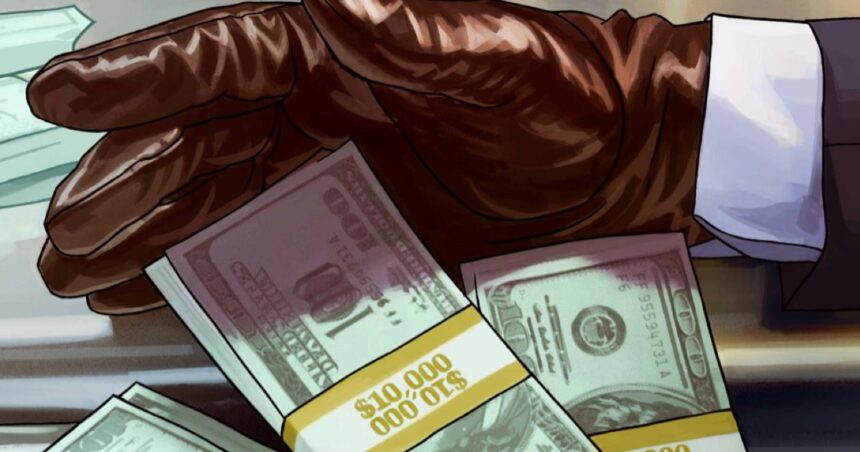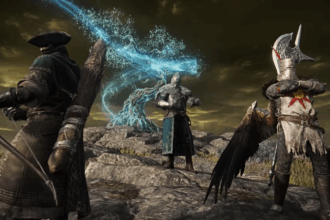A couple of weekends ago, my wife and I decided to take a virtual road trip in Los Santos, the sprawling open world inspired by Los Angeles. Our escapades are often unpredictable. One day, we’re diving into the depths of the ocean in a submarine, and the next, we’re dashing through the extravagant villas of Vinewood, just like we’ve seen in reality TV shows such as *Million Dollar Listing* or *Selling Sunset*. It’s an intriguing dynamic; while I have a solid grasp of LA’s real-life layout, my wife is a master of Rockstar’s chaotic digital rendition. More often than not, I find myself in the role of a passenger in this enticing ride through landscapes that reflect the joys and quirks of both cities.
Last week, however, we ventured somewhere that piqued our curiosity—far from our usual antics of sneaking onto the military base for a quick jet theft (which we’ve cheekily dubbed “dipping it low” after a catchy Christina Milian track). Instead of our typical stops, we wound up navigating a freeway tunnel that led to an unexpected gap in the walls. “Let’s check it out!” my wife exclaimed, and what we discovered was a labyrinthine underbelly of storm drains, sewers, and the subway system. It was quintessential GTA: a world brimming with clever design meant to be explored from behind the wheel. Exploring felt both mischievous and exhilarating. Who knew such secrets lay hidden beneath the vibrant city?
This brings to mind a question that often lingers with me: Why is there so much of Los Santos lurking underground? To answer that, I turn to one of my favorite books from the past decade—A Burglar’s Guide to the City by Geoff Manaugh. I’ll keep singing its praises until every gamer has a copy. This gem explores how urban environments can be manipulated, typically by those with creative inclinations to exploit them. It’s a transformative read that reshapes your view of the city.
Part of Manaugh’s argument is that burglars become adept navigators of the urban landscape. They’re remarkably inventive, slipping in through roofs, breaking walls, and utilizing the very fabric of the city to their advantage. There’s something intensely intriguing about how the people of Los Angeles have shaped its geography over the decades.
For example, back in June 1986, employees at a First Interstate Bank in Hollywood reported strange mechanical noises emanating from the vicinity of the vault. Just some rodent, the police concluded, despite the sounds persisting for a week. It turned out those noises were linked to audacious burglars, dubbed the Hole in the Ground Gang, who had all but excavated their way into the bank. It’s a thrilling narrative of audacity and ingenuity that acts as a captivating backdrop to our own misadventures in Los Santos.
These burglars were meticulous. Armed with intimate knowledge of LA’s intricate underground networks, they painstakingly crafted tunnels to facilitate their heist. Employing four-wheel drive vehicles, they successfully transported an estimated $172,000 in cash and up to $2.5 million in personal belongings. Their cleverness significantly informed the landscape of Los Santos.
In GTA 5, the heist missions echo the exploits of the Hole in the Ground Gang. During the Jewel Store Job, players can escape through the very tunnels that made the gang famous. The thrill of speeding through these murky pathways is a testament to Rockstar’s creative liberties, intertwining reality and fiction in spectacular ways.
The audacity of the Hole in the Ground Gang has been memorialized in movies like *Speed* and the 2003 remake of *The Italian Job*. These tales, tinged with mystery, reveal the complexities of a world lurking beneath our feet, directly influencing the storytelling within games like GTA 5.
Notably, Rockstar’s design reflects how ingrained these themes of creativity and heists are in Los Santos. The city’s underground is as rich and vibrant as its bustling streets above; it’s almost as if the actions of that daring gang are woven into the very essence of the game.
It’s fascinating to see that even the developers at Rockstar were influenced by these real-life narratives, which inevitably shape the experiences we have while playing. Many fans speculate about how this theme may even carry into future installments like GTA 6, as the rabbit hole of creativity and urban exploration continues to evolve.
Years later, they attempted another heist aimed at robbing two banks simultaneously near La Cienega and Pico. They were cut short but managed to escape once again, showcasing their daring spirit. Had they succeeded, the haul would have been astronomical—between $10 million and $25 million.
To conclude, there’s an exhilarating sense of connection within the layers that compose both real-life LA and its digital twin, Los Santos. The stories, the creativity, and the underground adventures consistently blur the lines between our world and the vibrant universe Rockstar has crafted. Perhaps in our virtual journeys, we’ve only scratched the surface of what these sprawling cities have to offer.
All insights related to the Hole in the Ground Gang in this narrative are derived from A Burglar’s Guide to the City by Geoff Manaugh. His latest collaboration with Nicola Twilley, Until Proven Safe: The History and Future of Quarantine, is equally captivating and a must-read.




















